Palenque ruins
09 de Octubre 2015
It is a city that shows significant progress and architectural beauty. It is located in Mexico and was one of the first sites to be studied after the Spanish conquest. The city of Pakal, King of Palenque, stands out not only by the magnificence of its temples but it is also the only tomb with buildings that have internal staircases.
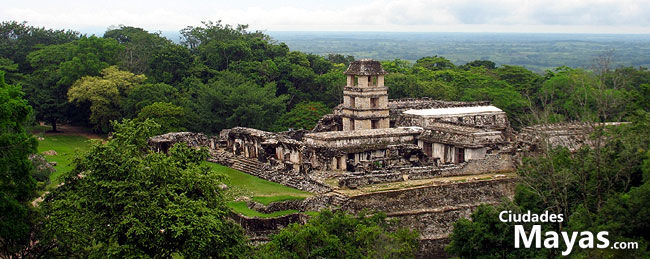
It is located north of the Rio Usumacinta in Mexico and its original name is B'aakal. There are links that show evidence of antagonism with Tonina and Tikal, Piedras Negras and the enemy of Tikal, Calakmul. It's architecture is amazing, with several temples, buildings, palaces and a field of Mayan ball .
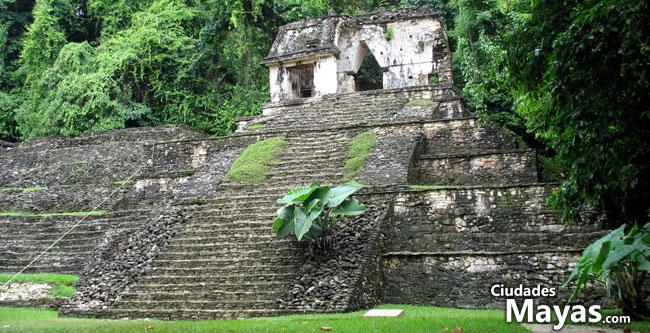
Admirable Architecture in Palenque
The most beautiful is the Temple of Inscriptions (above) and the Temple of the Cross with its six steps and axial levels, and the Sun Temple, erected in 672 and 690. Both are the work of Kan Balam, the son of Pakal.
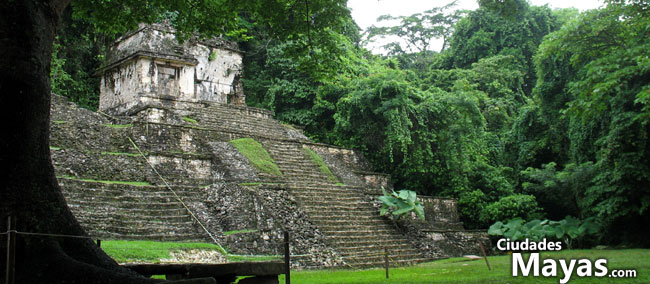
Early studies of Palenque
It's exploration began in the eighteenth century, when King Charles III of Spain sent to Antonio del Rio in the first expedition in 1787. The results were premature for the time, for the society had little interest in archaeological finds.
A second scan was composed by Guillaume Dupaix and Luciano Castaneda (the latter of Mexican origin), that in 1805. Their studies provided a number of planes that were exhibited in Paris. Later in 1821, while the territories became independent of Spanish power in the form of republics, Johan Waldeck made a number of additional planes, but like previous studies did not receive a worthy welcome but instead a lack of interest.

John Stephens and Frederick Catherwood visited Palenque and made explorations and special drawings, and published his book "Incidents of Travel in Central America" in 1842, this work included work performed at many sites, notably highlighting Chichen Itza. From this point it raised a genuine interest in the history of the original peoples of America before the Spanish conquest. In 1952 they began to make rather more formal studies with interest and restore the structures that were surrounded by jungle.
Detail was lost due to external conditions during the first expeditions, in their zeal to rid the buildings of its cloak of vegetation, fire caused irreparable damage.

Architectural magnificence The most beautiful is the Temple of Inscriptions (above) and the Temple of the Cross with its six steps and axial levels, and the Sun Temple, erected in 672 and 690. Both are the work of Kan Balam, the son of Pakal.

Early studies of Palenque
It's exploration began in the eighteenth century, when King Charles III of Spain sent to Antonio del Rio in the first expedition in 1787. The results were premature for the time, for the society had little interest in archaeological finds.
A second scan was composed by Guillaume Dupaix and Luciano Castaneda (the latter of Mexican origin), that in 1805. Their studies provided a number of planes that were exhibited in Paris. Later in 1821, while the territories became independent of Spanish power in the form of republics, Johan Waldeck made a number of additional planes, but like previous studies did not receive a worthy welcome but instead a lack of interest.

John Stephens and Frederick Catherwood visited Palenque and made explorations and special drawings, and published his book "Incidents of Travel in Central America" in 1842, this work included work performed at many sites, notably highlighting Chichen Itza. From this point it raised a genuine interest in the history of the original peoples of America before the Spanish conquest. In 1952 they began to make rather more formal studies with interest and restore the structures that were surrounded by jungle.
Detail was lost due to external conditions during the first expeditions, in their zeal to rid the buildings of its cloak of vegetation, fire caused irreparable damage.

It is still to be explored and they are restoring temples covered with mounds,but to date, with notable importance they are highlighting the Temple of Inscriptions.
It differs from other buildings by having a planned line from the start. Over time, the Mayans used to build on the earlier temples to increase its magnificence for social and political reasons. Very of ten this resulted in multi-layered solid temples. Some exceptions are the funerary buildings at the base. However, the Temple of Inscriptions reveals a plan carefully followed, containing a tomb built perfectly inside.
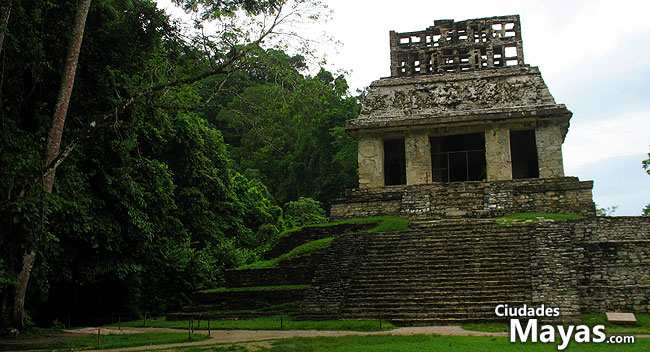
Royal Tomb of K'inich Janaab 'Pakal I
Steps descend to find a crypt that contains a tremendous carved piece whose weight is estimated at 5 tons. It is impossible to have introduced such a monument built after the pyramid, so obviously that was part of the construction plan while continuing to carefully place the building erecting it with vaulted ingenious.
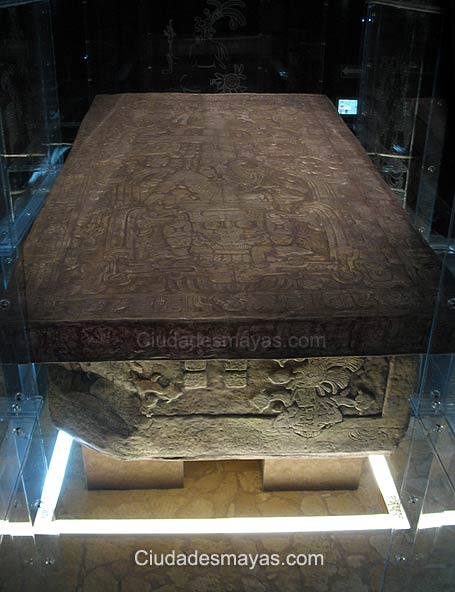
The crypt was opened on 13 June 1952, revealing the huge slab of 3.8 by 2.2 meters. To reach it from the top it was necessary to remove debris from the land fill, estimated at 300 tons. These steps were discovered in 1949 by Alberto Lhuillier.
In the place there were five skeletons of both sexes. Studies show that they were slaughtered with the intention of accompanying the ruler Pakal to the beyond. Around him his ancestors detailed his crypt for several generations.

The Mayan city tower
Palenque's buildings have vaults constructed, based on a rather sophisticated technique. It was just as surprising to the researchers as were the internal staircases, but if something has become an unmistakable symbol of Palenque it is the Mayan tower.
The Great Palace of Palenque has a wide staircase with superior distribution separated by courtyards. And on top stands a tower of three levels with their respective internal bleachers.
Unlike other Mayan buildings where it was important to have the structure much wider at the base than at the top, this tower has a system of steps, that are available with doors on the sides. It is suggested that it had a defensive military use, to provide views from the top for the guards to occupy.
Palenque's buildings have vaults constructed, based on a rather sophisticated technique. It was just as surprising to the researchers as were the internal staircases, but if something has become an unmistakable symbol of Palenque it is the Mayan tower.
The Great Palace of Palenque has a wide staircase with superior distribution separated by courtyards. And on top stands a tower of three levels with their respective internal bleachers.
Unlike other Mayan buildings where it was important to have the structure much wider at the base than at the top, this tower has a system of steps, that are available with doors on the sides. It is suggested that it had a defensive military use, to provide views from the top for the guards to occupy.
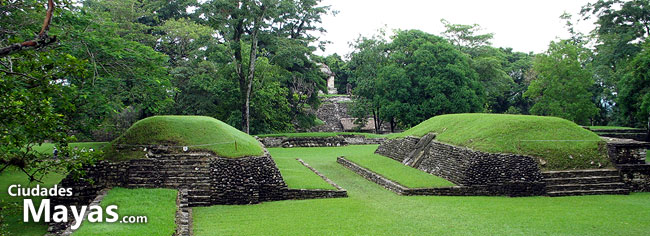
Publicaciones relacionadas:
- Izapa, ciudad maya en el Estado de Chiapas
- Museo de la Cultura Maya en Chetumal
- Kohunlich y sus mascarones
- Chichen Itzá maravilla del mundo
- Labná in the Yucatán
- Kinichkakmoo en Izamal
- Mayapán
- Tulum en Quintana Roo
- Uxmal en Yucatán
- Chicanná
- Mayapán maya city
- El Rey sitio arqueológico en Cancún
- Kabáh en Yucatán
- Sayil en Yucatán
- Ek Balam el Jaguar Negro
- Xlapak
- Cobá maya ruins
- Palenque zona arqueológica
- Xlapak ruins
- Tulum in Quintana Roo
Lee más publicaciones de:
Arqueología México
